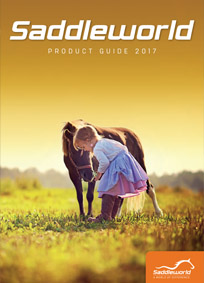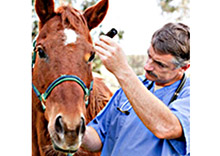- Home
Welcome to Saddleworld!
The Saddleworld Website is a showcase
of a selected range of products that are available from any Saddleworld throughout Australia.If you would like to purchase a specific product, please contact your nearest store.
Click on Our Stores to find your nearest Saddleworld Store!
- Brands
- Products
Saddleworld Products & Brands
Saddles
Bridlewear
Tack Room
Horse Boots
- Kentucky »
- Eurohunter »
- Eurohunter »
Helmets
- Our Stores
Choose your nearest store
New South Wales
Queensland
South Australia
- Evandale »
- Gawler »
- Mt Barker »
- Mt Gambier »
- Wangara »
- Devonport »
- Launceston »
Western Australia
Tasmania
- News & Tips
- Catalogues
2017 Saddleworld Product Guide Out Now!

The 2017 Saddleworld Product Guide is out now.
Visit your nearest Saddleworld store and pick up your FREE copy today.
View the 2017 Product Guide Online Now!- About Us
West Nile Fever - Things You Should Know

In the summer and autumn of 2011, an unprecedented number of cases of neurological disease in horses occurred across the south-east of Australia. A variant West Nile virus (WNV) strain, WNVNSW2011 was identified as the causative agent for most cases. This virulent virus emerged in Australia. WNVNSW2011 is related to the indigenous WNV strain in Australia, Kunjin virus, but is substantially more neuroinvasive.
The clinical signs exhibited by horses infected with WNVNSW2011 were consistent with those described for West Nile fever (WNF). The World Organisation for Animal Health (OIE) provides the following criteria to define the occurrence of WNF:
1. WNV has been isolated from an animal that shows signs consistent with WNF; or
2. viral antigen or viral ribonucleic acid (RNA) specific to WNV has been identified in samples from one or more animals that show clinical signs consistent with WNF, or that is epidemiologically linked to a confirmed or suspected outbreak of WNF; or
3. antibodies to WNV have been identified in an unvaccinated animal that shows clinical signs consistent with WNF, or that is epidemiologically linked to a confirmed or suspected outbreak of WNF.The experience of 2011, supported by recent research, leads to the conclusion that WNF as defined in the OIE Terrestrial Animal Health Code1 is present in Australia. Based on this information, Australia can no longer claim country freedom from WNF. To-date, there have been no reports of WNF in Australia in species other than horses. The occurrence of the disease in any species, including wild species, is notifiable to the OIE.
Clinical WNF is on Australia’s national list of notifiable diseases. This means there is a legal requirement for anyone who diagnoses WNF to immediately notify their relevant state or territory animal health authority.
I would like to acknowledge the work of Peter Kirkland and histeam at the NSW Department of Primary Industries, Elizabeth Macarthur Agricultural Institute in characterising WNVNSW2011.2
Mark Schipp
Australian Chief Veterinary Officer
References
Frost MJ, Zhang J, Edmonds JH, et al. Characterization of Virulent West Nile Virus Kunjin Strain, Australia, 2011. Emerg Infect Dis 2012;18:792–800
Article and more information at …
http://www.ava.com.au/13006











 Brands
Brands
Ammo
Eurohunter Rugs
Grazioli Boots
Kentucky Horseware
PDS Carl Hester Collection
Pessoa Saddles
Prestige Saddles
Thorowgood
Trainer’s
Sponsored Events
Saddleworld Melbourne International 3DE
Saddleworld Australian Youth Showjumping Championships
Saddleworld Brisbane CDI
PSI Dressage & Jumping with the Stars
Copyright © 2013 Saddleworld Pty Ltd.
Taking care of all your horse needs. Saddles, horse rugs, riding equipment, bridles, saddlery, clothing, veterinary supplies. All Rights Reserved.
Home | Privacy Policy | Pricing Policy | Contacts | Join - Products






